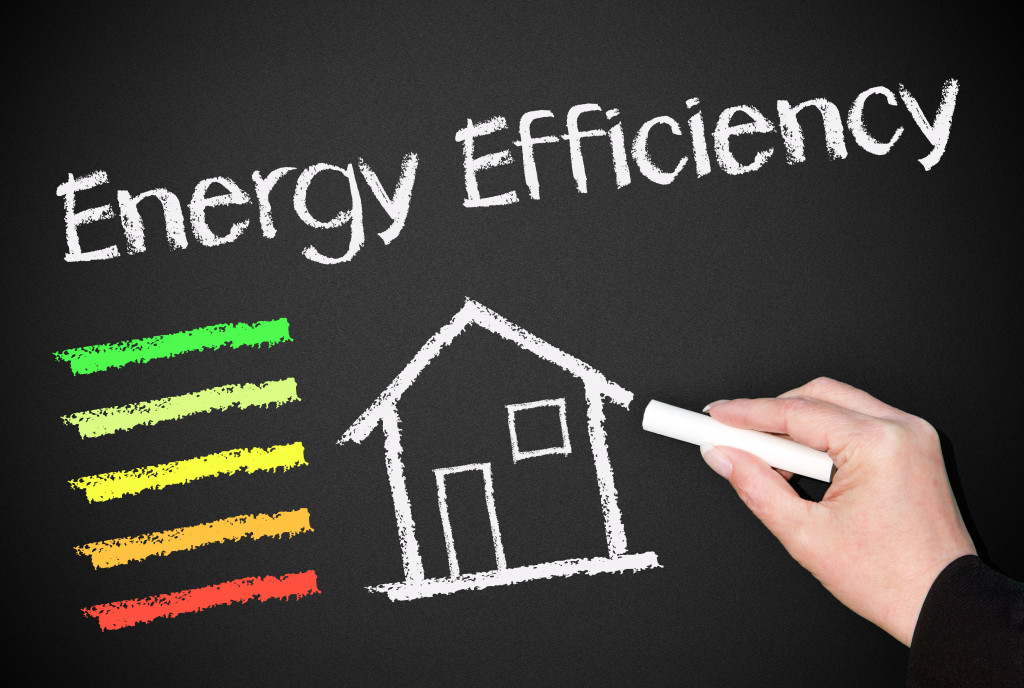- Understand your business’s energy needs by conducting an energy audit and tracking energy consumption over time.
- Assess your building for better efficiency with an assessment and install LED lighting, motion sensors, and high-efficiency HVAC equipment.
- Utilize air duct sealing to reduce air leakage and ensure HVAC system performance.
- Install high-performance windows and doors with low-emissivity coatings, triple glazing, gas fills, and argon-filled spacers for improved energy efficiency.
As a business owner, you want to ensure your company runs efficiently and profitably. One way to achieve this is by improving your energy efficiency. Improving energy efficiency in your business helps the environment and saves you money on energy bills. In this article, we’ll discuss five ways you can improve energy efficiency in your business.
1. Understand Your Business’s Energy Needs
You need to understand your energy needs to improve energy efficiency in your business. The first step is to conduct an energy audit. An energy audit will help you identify areas where you can save energy and reduce costs. It will also help you identify equipment using more energy than necessary. Once you understand your energy needs better, you can start making changes to reduce your energy consumption.
Another way to understand your business’s energy needs is to track your energy consumption over time. You can use energy monitoring systems to track your energy usage and identify improvement areas. Understanding your energy needs can reduce your energy consumption and save money on energy bills.
2. Assess Your Building for Better Efficiency

Assessing your building for better efficiency is another way to improve energy efficiency in your business. One way to assess your building’s energy efficiency is to conduct a building energy assessment. A building energy assessment will help you identify areas where you can improve energy efficiencies, such as insulation, lighting, and heating and cooling systems.
You can also improve energy efficiency by installing energy-efficient lighting, such as LED lights. LED lights use less energy than traditional incandescent bulbs and last longer, reducing the need for frequent replacement. Another way to improve energy efficiency is to install motion sensors that turn off lights when no one is in the room.
3. Increase Efficiency Through HVAC Upgrades
Heating, ventilation, and air conditioning (HVAC) systems are some of the biggest energy users in commercial buildings. Upgrading your HVAC system can significantly improve energy efficiency in your business. One way to improve HVAC efficiency is to install programmable thermostats. Programmable thermostats allow you to set the temperature of your building based on your business’s needs, reducing energy consumption when the building is unoccupied.
You can also improve HVAC efficiency by installing high-efficiency HVAC equipment. High-efficiency HVAC equipment uses less energy than traditional equipment, reducing energy consumption and saving you money on energy bills. Regular maintenance of HVAC equipment is also essential to ensure it runs efficiently.
4. Utilize Air Duct Sealing
Air duct sealing is an important step to improve energy efficiency in your business. Air ducts can leak air, resulting in higher energy bills and decreased HVAC system performance. To ensure your air ducts are properly sealed, contact a professional such as Aeroseal Colorado for an assessment. They can assess the air ducts and seal areas where air leakage occurs. This will reduce energy consumption and improve the performance of your HVAC system, resulting in lower energy bills and better overall efficiency.
5. Installing High-Performance Windows and Doors

Installing high-performance windows and doors can also improve energy efficiency in your business. High-performance windows and doors are designed to reduce air leakage, reducing energy consumption and saving you money on energy bills. These windows and doors also help regulate indoor temperatures, reducing the need for HVAC systems to work harder.
High-performance windows and doors also help reduce noise pollution, improving the overall comfort of your building. They also improve the security of your building by reducing the likelihood of break-ins.
Here are some high-performance windows and doors to utilize:
Low-Emissivity Coatings
Low-emissivity coatings are applied to the surface of windows and doors, helping to reduce heat loss in winter and retain cool air in summer. The coating also helps to reflect sunlight, reducing solar gain and making it easier for your building to stay cooler.
Triple Glazing
Triple glazing combines three separate panes of glass with an insulated spacer between them. This creates an additional layer of insulation that helps reduce heat loss and improve thermal performance.
Gas Fills
Many high-performance windows use gases such as argon or krypton, which act as an insulator between layers of glass, further improving the energy efficiency of your windows.
Argon-Filled Spacers
These spacers are designed to reduce air leakage between panes of glass, helping to improve the thermal performance of your windows and doors. They also help increase sound insulation, making it easier for you to keep noise pollution at a minimum.
Final Thoughts
Improving energy efficiency in your business is essential to reduce energy consumption, save money on energy bills, and help the environment. Understanding your business’s energy needs, assessing your building for better efficiency, upgrading HVAC systems, utilizing air duct sealing, and installing high-performance windows and doors are all effective ways to improve energy efficiency in your business. By implementing these measures, you can reduce energy consumption and save money on energy bills.




